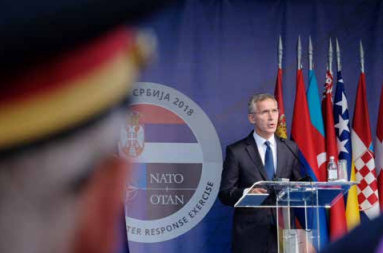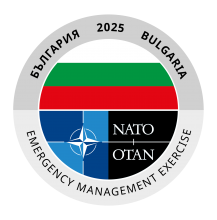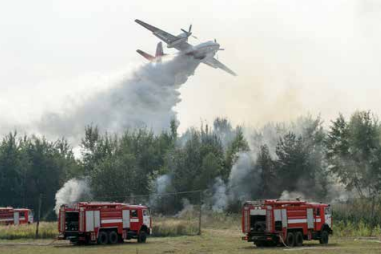EADRCC
Better prepared for disasters and crises
Civil emergency management exercises at NATO
The Euro-Atlantic Disaster Response Coordination Centre (EADRCC) is NATO’s mechanism for responding to civil emergencies, including disasters, technological incidents, and acts of terrorism. One of the EADRCC’s tasks is to organise regular consequence management exercises, where civil protection actors work together to improve their ability to respond to a wide range of crises, manage the consequences of disasters and build up their resilience.
EADRCC exercises are among the world’s largest and most complex multinational activities in the field of civil protection. On average, there are more than 2000 participants in each EADRCC exercise; most are civilian, but military support to civilian emergency response is often part of the training scenarios.
All Allies and partners are invited to participate, and so are relevant International Organisations and private companies who test innovative technologies in disaster management.
|
Objectives EADRCC exercises are co-organised by NATO and the nation hosting the exercise, which determine the exercise objectives. Primary objectives include building up resilience, disaster preparedness, and interoperability with Allies and partners in emergency response. Specific exercise objectives are met through the different exercise scenarios, e.g.: response to Chemical, Biological, Radiological and Nuclear attacks, water rescue, large scale population movements, etc. National and international participants also use these exercises to test and validate their response plans, procedures and capabilities, to test border-crossing speed and rules in an emergency, and to improve their interaction.
Organisation EADRCC exercises have five phases: inception, concept, planning, execution and evaluation. The latter three phases cover approximately one calendar year. Each exercise is tailored by the Core Planning Team to the requirements of the host nation and other participants. The Core Planning Team consists of around 50 experts brought together by NATO and the host nation, who work on all aspects of the planning, conduct and evaluation. Nations and international organizations that are interested to take part in the exercise are invited to the assets they plan to contribute to the exercise and determine the disciplines and capabilities in which they want to participate. The details of participation, scenarios and matching training objectives to realistic challenges are ironed out during planning conferences ahead of the exercise.
Conduct A typical EADRCC exercise lasts six calendar days, including an arrival and departure day for the domestic and international teams. All teams gather at the Base of Operations, from which they deploy to the exercise sites, depending on the scenario injects they receive. A wide range of disciplines can be exercised: coordination mechanisms, urban-water-mountain search and rescue, public information and communication in emergencies, management of migration flows, military support to civilians, rope rescue, fake news and disinformation, critical infrastructure failures, command post activities, virtual reality scenarios integrated within the field exercise, CBR accidents/terrorist acts, emergency medicine, etc. |
|
|
Evaluation An evaluation team observes and evaluates how the exercise has contributed to its objectives. Evaluation reports, as well as the participants’ observations shared in a post-exercise lesson identified conference, feed in the design of future EADRCC exercises. A report about the exercise conduct and outcomes is shared with the Resilience Committee.
Financial aspects The costs of EADRCC exercises are shared by both NATO and the Host Nation. Participating nations and organisations cover their own costs related to the exercise. NATO funds may be available to support the participation of teams from eligible partner nations. |
 |
|
Past Exercises NORTH MACEDONIA 2021 – Ohrid/Struga, The Republic of North Macedonia SRBIJA 2018 - Mladenovac, Serbia BOSNA I HERCEGOVINA 2017 - Tuzla, Bosnia and Herzegovina
CRNA GORA 2016 - Montenegro Digital exercise and seminar on civil-military cooperation in health disaster response 2016 - Targu Mures, Romania EADRCC Consequence Management Field Exercise 2015 - Ukraine GEORGIA 2012 – Tbilisi, Georgia CODRII 2011 - Moldova ARMENIA 2010 – Armenia Zhetysu 2009- Kazakhstan UUSIMAA 2008 - Finland Idassa 2007 - Zadar, Croatia Consequence Management Exercise 2006 – Lazio, Italy Joint Assistance 2005 – Ukraine NATO-Russia disaster response exercise and seminar 2004 – Kaliningrad, Russia Dacia 2003 - Pitesti, Bucharest Ferghana 2003 – Uzbekistan Bogorodsk 2002 – Noginsk, Russia Taming the Dragon 2002 – Dalmatia, Croatia Trans-Carpathia 2000 - Trans-Carpathian Oblast (Uzhgorod) |
|









